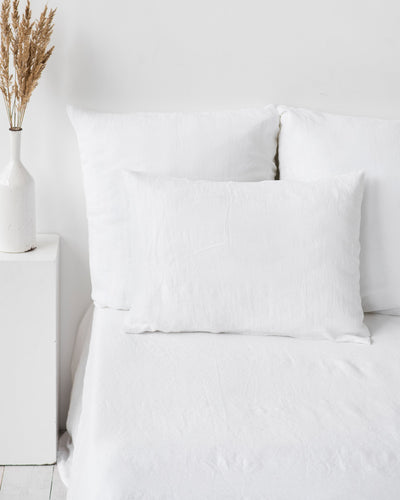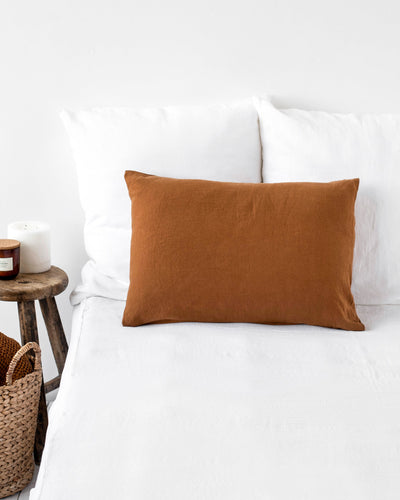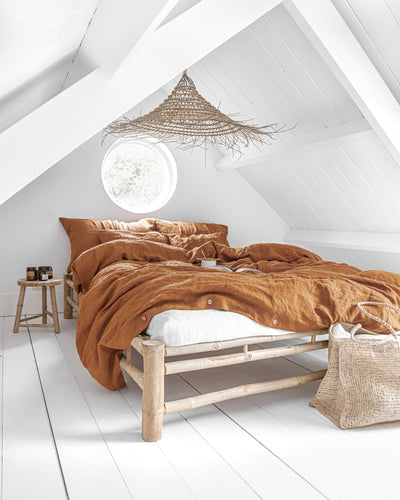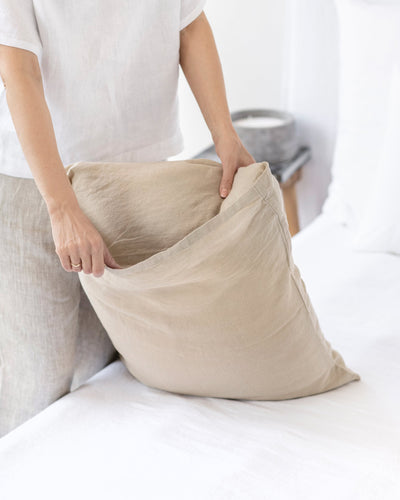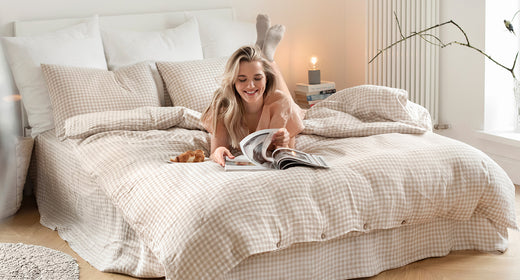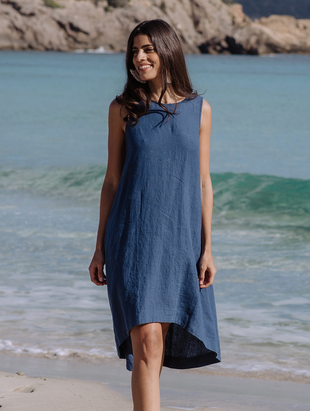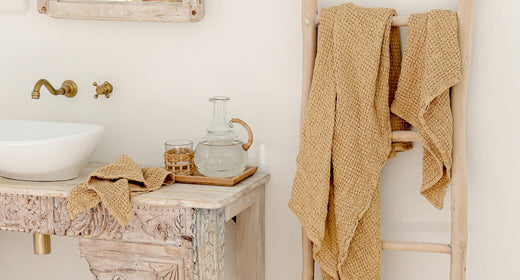
How to Get Wrinkles Out of Linen Pants?
Why Iron Linen?
A strong reason why linen is so popular is its relaxed appearance, alluring us to the effortless and lived-in charms of linen. And while you can grow to love the wrinkles and creases, you can still iron linen to achieve a smoother, crisper finish and a polished look. Another reason to iron linen is that ironing makes the garment softer and more comfortable to wear.
Can You Iron Linen?
Yes, you can definitely iron linen. However, you have to remember that it will take a bit more effort than ironing other materials, as it has low elasticity and holds wrinkles and creases, giving linen a wrinkled look. Despite this, you'll still be able to iron linen, provided that you follow the care instructions of your garment.
How to Iron Linen


Here is a step-by-step guide on how to iron linen items effectively:
Preparing the linen item
The first step of ironing your linen item is to prepare it by dampening it with a spray bottle at least five or ten minutes before ironing. Dampening makes the fibers more relaxed, thus easing the process of smoothing out. You can use plain cold water in the whole garment or spray on starch in areas like collars and cuffs that need extra crispiness.
Setting up the iron and ironing board
The next step is setting up the iron and the ironing board. Linen can handle high temperatures, so you can set your iron to a high-temperature setting or if it has a linen option. If it also has a steam option, make sure to fill your iron with water and turn on the steam option when you're ready to iron. The last thing to consider about your iron is whether its faceplate is clean to prevent stains.
Your ironing board also plays a considerable role when ironing linen. Your ironing board should be well-padded, so if your ironing board has a thin layer, you can add a towel to make sure the padding is thicker.
Ironing techniques
To achieve a polished finish, you should always iron inside out or on the wrong side to prevent any damage to the garment. You can also use a pressing cloth. If your linen shirt or dress has any embroidery or laces, you should start ironing them first. If not, always begin with the thicker areas like cuffs, waistbands, and collars, then move to the other areas. Another crucial detail is how you move the iron, as you should do gentle and steady strokes across the linen item and move it in the direction of the weave. You should also keep your iron constantly moving smoothly to avoid scorching the material and frequently lift the iron to check for wrinkles. Last but certainly not least, you should follow the lines and stitching of the garment to ensure an even finish.
Handling wrinkles and creases
In the final step of the ironing process of linen, you should let the garment air cool and rest on the ironing board for 5-10 minutes. After ironing, you can leave your garment on a hanger to completely dry and set in the shape. If you're going to wear the item immediately, you should hang it at least 10-15 minutes before wearing it. This final step ensures that your linen clothing retains its smooth appearance and prevents new wrinkles from forming.
Special Considerations
When ironing linen, it's important to keep in mind a few special considerations that will help ease the process. Some of them are:
- Dampness is key when ironing linen. You can iron linen when it is still slightly damp from the wash or use a spray bottle to dampen it when dry.
- Be cautious with emblements like embroidery or lace and use a lower heat setting or put padding on top to add a protective layer.
- The importance of ironing on the wrong side or using a pressing cloth is emphasized when ironing items in darker colors to prevent shiny spots.
- Mind the temperature, as the ideal temperature for ironing linen is 445°F or 230°C. However, you should check the label if your garment is iron-safe or test a small area first.
Alternatives to Ironing Linen
If you want your linen items to have a polished appearance but want to avoid ironing them, there are alternatives to help you achieve your desired look. Some of them are:
- Steamer: A fabric steamer can be a great alternative to remove sharp creases and wrinkles. It would be best if you used a steamer with a high-temperature setting or one with a linen option, and you should hold your linen item on a hanger and lightly moisten it. Then, pass the steamer gently over the garment until you're happy with the results.
- Drying methods: You can tumble dry linen at low temperatures, remove it from the dryer while it's slightly damp, and lay it flat to finish drying. Air drying is a great option, as it helps with wrinkles and avoids fabric stiffness. Remember to shake the garment before hanging it on a liner, and when slightly damp, lay it flat to finish drying.
Conclusion
While some may consider linen a problematic fabric to iron, it can't be further from the truth. By following a few steps, the process becomes simpler than you might think. Therefore, keep in mind to dampen the item, iron on the wrong side, and hang the garment to set in the shape. You can also explore steamers and improve your linen drying method to reduce creases and wrinkles. So, while the effortless appearance is a significant part of the linen allure, you still enjoy the timeless elegance of linen without worrying about stubborn wrinkles.
 United States
United States
